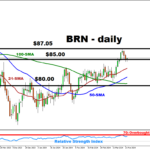On April 19, 2017, BrainStorm Cell Therapeutics (Nasdaq: BCLI) announced the publication of preclinical data on NurOwn® demonstrating potential utility in the treatment of autism. The research is published in Behavioural Brain Research and highlights the long-term beneficial effect of BrainStorm’s NurOwn (neurotrophic factors-secreting mesenchymal stem cells) transplantation in the BTBR mouse model of autism (1). The company plans to pursue clinical development with NurOwn as a potential treatment for autism later this year. A Phase 3 clinical study with NurOwn as a potential treatment for amyotrophic lateral sclerosis (ALS) is also expected to begin in 2017.
Preclinical Autism Research
According to Autism Speaks, autism spectrum disorder (ASD) refers to a range of conditions characterized by challenges with social skills, repetitive behaviors, speech and nonverbal communication, as well as by unique strengths and differences. ASD is defined by a certain set of behaviors and is a “spectrum condition” that affects individuals differently and to varying degrees. There is no known single cause of autism, but increased awareness and early diagnosis/intervention and access to appropriate services/supports lead to significantly improved outcomes.
The CDC estimates autism’s prevalence as 1 in 68 children in the U.S. This includes 1 in 42 boys and 1 in 189 girls. Autism’s most obvious signs tend to appear between 2 and 3 years of age. In some cases, it can be diagnosed as early as 18 months, and some developmental delays associated with autism can be identified and addressed even earlier. Around one-third of people with autism remain nonverbal. Another one-third of people with autism have an intellectual disability.
BrainStorm’s previous preclinical research found that mesenchymal stem cells (MSC) improve social function and induce long-lasting effects of amelioration of autistic-like behavior in BTBR mice (2). BTBR T+ Itpr3tf/J are an inbred strain of mice that demonstrate autistic-life behavioral phenotypes consistent with the diagnostic criteria for ASD. Use of BTBR mice to conduct preclinical research is a widely accepted animal model of disease (3). BTBR mice display impaired social interaction and communication as well as cognitive rigidity. Moreover, according to BrainStorm’s manuscript, BTBR mice show biochemical disturbances consistent with findings seen in autistic patients, such as alterations in transcription and protein expression of brain-derived neurotrophic factor (BDNF) in the hippocampus and decreased hippocampal neurogenesis (4).














Leave A Comment